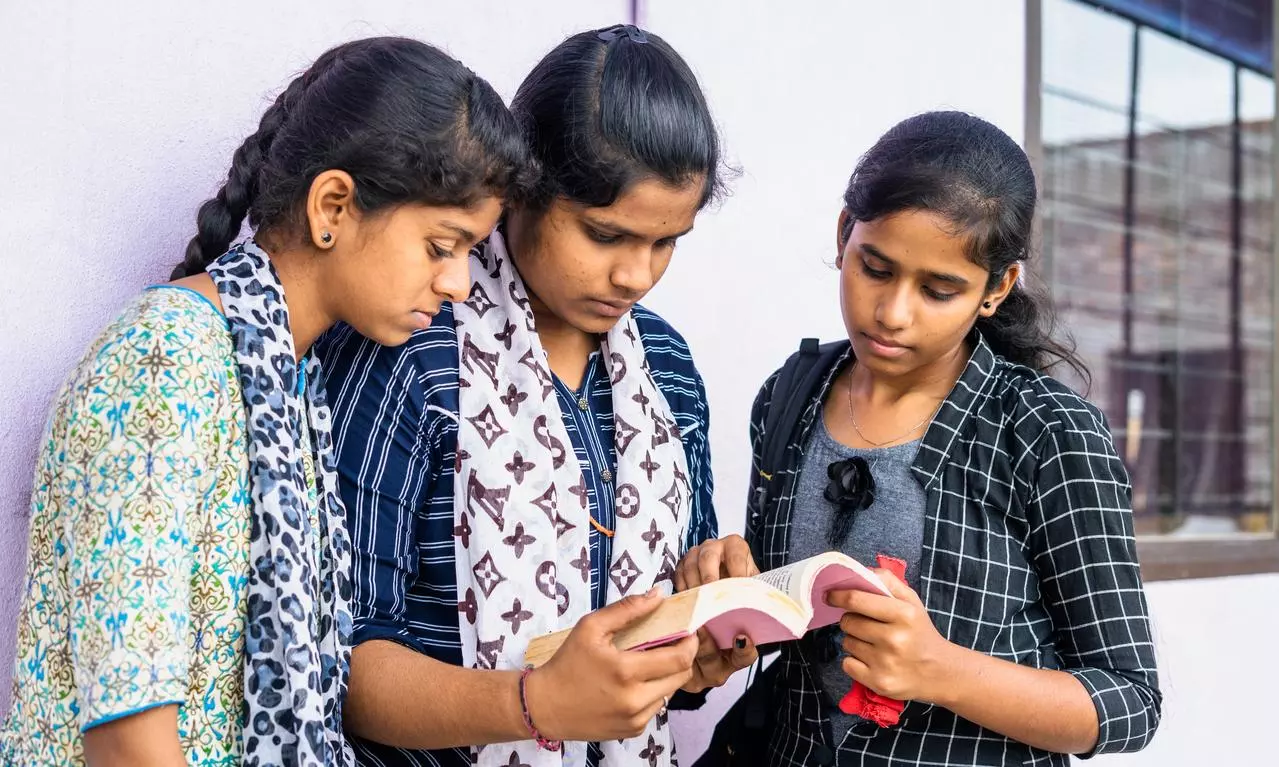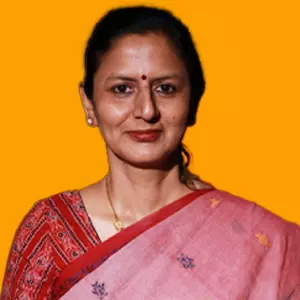
- Home
- India
- World
- Premium
- THE FEDERAL SPECIAL
- Analysis
- States
- Perspective
- Videos
- Sports
- Education
- Entertainment
- Elections
- Features
- Health
- Business
- Series
- In memoriam: Sheikh Mujibur Rahman
- Bishnoi's Men
- NEET TANGLE
- Economy Series
- Earth Day
- Kashmir’s Frozen Turbulence
- India@75
- The legend of Ramjanmabhoomi
- Liberalisation@30
- How to tame a dragon
- Celebrating biodiversity
- Farm Matters
- 50 days of solitude
- Bringing Migrants Home
- Budget 2020
- Jharkhand Votes
- The Federal Investigates
- The Federal Impact
- Vanishing Sand
- Gandhi @ 150
- Andhra Today
- Field report
- Operation Gulmarg
- Pandemic @1 Mn in India
- The Federal Year-End
- The Zero Year
- Science
- Brand studio
- Newsletter
- Elections 2024
- Events
- Home
- IndiaIndia
- World
- Analysis
- StatesStates
- PerspectivePerspective
- VideosVideos
- Sports
- Education
- Entertainment
- ElectionsElections
- Features
- Health
- BusinessBusiness
- Premium
- Loading...
Premium - Events

Who’s going to bear the brunt of their Operation Population Increase? It could wreak havoc on Indian women’s health and wellbeing
Be careful what you wish for, said the sages.
For decades after Independence, India struggled to keep its population under control. The southern states, zealous front-benchers in this mission, passed the test with flying colours.
But now, the report card — a testament to the South’s impressive growth in development indices — seems less fruitful. From a Total Fertility Rate (TFR) of 5.74 in 1951-61, South India’s TFR fell to 1.64 in 2019-21. The national average for 2019-21 was 2.0, with 2.1 being the replacement level.
This means South India’s population growth is coming down at a rapid pace, and this has the chief ministers worried. The embellished reason for the anxiety is the youth (working) population size, which shrinks when the TFR dips.
Prospect of delimitation
However, the biggest cause for concern is the prospect of delimitation, which could begin as early as 2026, and presents southern politicians with a ready-made bogie to leave the voting populace anxious.
As the South Indian population drops, the delimitation exercise could lead to fewer Lok Sabha seats for the five southern states, and hence lower representation in Parliament. To this extent, the anxiety is valid. Where the issue takes a bizarre turn is in how the chief ministers are responding to it. The cure-all, in their myopic vision, is South Indians having more children.
Last month, Tamil Nadu Chief Minister MK Stalin, referring to an old Tamil saying that enumerates 16 forms of wealth a couple could be blessed with, quipped: “Why not aim for 16 children?”
Also read | Stalin-Naidu's 'more children' comments shake up delimitation politics again
His peer in neigbouring Andhra Pradesh, N Chandrababu Naidu, went several steps ahead, passing a law that allows a person with more than two children to contest in urban local body elections. The AP Municipal Laws Amendment Bill, 2024 reversed an earlier rule that barred people with more than two children from contesting these polls, obviously as a population control measure.
The amendment, said the Naidu government, seeks to reverse the dwindling fertility rate in Andhra Pradesh.
Progress reversal
It is shocking that the CMs of two highly developed states, which have made admirable strides in women’s education and labour participation, may reverse the progress at one stroke. Who, after all, is going to bear the brunt of their Operation Population Increase?
Even if they follow the example of, say, Japan, to actively incentivise child-rearing — which seems highly unlikely — state-sponsored encouragement of people to have more children could wreak havoc on Indian women’s health and well-being.
If most women in India are now getting an education and a proportion of them are gainfully employed, it did not come easy. They had to crawl up inch by inch, chipping away at patriarchy, misogyny, poor nutrition, low education levels, glass ceilings and a host of other obstructions. Even suggesting at this stage that they stay home and have more kids is preposterous.
Also read | India's South and North are worried about population for vastly different reasons
Urban educated women may have the agency to not pay heed to the chief ministers’ advice, but the less fortunate ones, not so. As is, women in some communities are forced to have as many children as it takes till the family is ‘blessed’ with a male heir.
Simplistic view
While the ‘solution’ is outrageous, the problem itself is being viewed too simplistically. Yes, the TFR is coming down, but that doesn’t mean the population is low. The fact remains that India is the world’s most populous country, and the South accounts for around 20 per cent of the total population. Tamil Nadu’s population, leaving out Chennai, is the size of Thailand. Karnataka’s population is roughly equal to that of the UK. Bengaluru's population of 1.3 crore is estimated to nearly double to 2.5 crore in a decade.
The cities are bursting at the seams and infrastructure is stretched thin. While the average village in the South might be more developed than one in the Hindi belt, there are still miles to go. In Tamil Nadu, for instance, despite the Dravidian development push, female infanticide and child marriages are rampant. Who gave the idea that having more children will solve any of these problems?
In very rich nations, many young couples are childless by choice. Those governments gently nudge them to have a child or two. A government—a third-world one, no less—asking parents to have more and more children beats logic.
Health goes for a toss
The one biggest argument against Naidu and Stalin’s all-cure panacea for delimitation is women’s health. Childbearing takes a huge toll on the mother’s wellbeing. Pregnancy and childbirth are physically agonising even for the healthiest of women. Some women additionally go through painful IVF procedures. Postpartum depression is written off as frivolous whining.
Watch | Chetan Ahimsa: Women are victims in unregulated film industry
And, obstetric violence is a reality in India. In rural and semi-rural areas, the incidence of physical and verbal abuse of pregnant women is well recorded. “Neglectful, unconsented and discriminatory care; forced procedures on child-birthing women has become part of childbirth culture of many health centres”, says a report in Down to Earth. The labour rooms are often filthy and poorly equipped, leading to infections, it notes.
Nutritional deficiencies are highly prevalent in Indian women, both rural and urban. A Lancet report titled ‘The silent tragic reality of Hidden Hunger, anaemia, and neural-tube defects (NTDs) says: “Throughout life, most Indians consume diets that range between ‘barely sufficient’ to ‘frankly inadequate’ in providing daily requirements of iron, folate, and vitamin-B12…These micronutrient deficiencies are more acutely felt in women whose requirements increase during menstruation, pregnancy, and lactation.”
All-pervasive problem
If you assume the report must be referring to some remote village in Bihar or Chhattisgarh, it’s far from the truth. A PubMed Central report titled ‘Dietary intake across reproductive life stages of women in India:
A cross-sectional survey from four districts of India examined the dietary habits of women and girls in the districts of Sri Ganganagar (Rajasthan), Patna, West Delhi, and Bengaluru Urban. The women from Bengaluru South were found to be taking the least amount of calcium and folic acid—critical during pregnancies—though their intake of other nutrients such as iron and zinc was much better.
Studies also show that having more children in a household leads to poorer health outcomes. The anaemia and other nutritional deficiencies of pregnant Indian women get passed on to the children. There is also the poor nutrition and fewer opportunities they are faced with since there are too many mouths to feed in the household.
Career setback
The ‘more children’ formula is bound to take a huge toll on a woman’s career, too, challenged as it is already. Aon’s 2024 Voice of Women study, which surveyed 24,000 women employees across 560 companies, spoke of a pervasive ‘maternity penalty’.
Nearly 40 per cent of working mothers noted that going on maternity leave hurt their pay, and “many found their roles altered to positions they did not prefer”, it said.
“Around 75 per cent of working mothers reported a career setback of one to two years after returning from maternity leave,” it added. This when the women have just one or two children each. With three or four or whatever number the esteemed chief ministers may ‘recommend’, women might as well forget going out to work.
Also read | For Muslim women, it's a complex route to gender equality
Two options
Can South India find a solution to the delimitation problem that lets women be? One could be welcoming immigrants from other states and embracing them as their own. The Centre and North Indian governments must work closely with the South to create enough socio-cultural-political-economic conditions for this to happen.
The other — and not mutually exclusive — option is to fight the situation politically. Naidu’s TDP is a critical part of the ruling NDA at the Centre. Stalin’s DMK is a key component of the Opposition INDIA bloc. They would do well to use their political girth to bring in constitutional changes to ensure the falling fertility rate doesn’t gnaw away at South India’s representation in Parliament.
And, before they even think about asking women to reproduce more, they could consider asking women — even in their own circles — if it’s a good idea.
As Rachel Green (played by Jennifer Aniston) put it so eloquently in the popular sitcom Friends, “No uterus, no opinion.”


